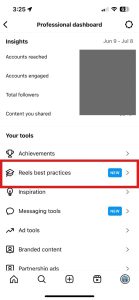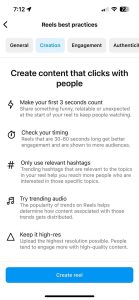Introduction
Importance of Consistent Brand Messaging
Consistent brand messaging is crucial for building a strong and recognizable brand. It ensures that your audience receives a unified and coherent message, regardless of where or how they interact with your brand. Consistency helps in establishing trust, reinforcing brand identity, and creating a memorable experience for your customers.
Overview of the Benefits of Consistency
Consistency in brand messaging leads to several benefits, including increased brand recognition, improved customer loyalty, and a stronger market presence. When your messaging is consistent, it reinforces your brand’s values and promises, making it easier for customers to connect with and remember your brand.
Defining Your Brand Voice and Tone
Importance of a Clear Brand Voice
A clear and distinctive brand voice sets your brand apart and helps in communicating your brand’s personality and values. It ensures that all communications reflect the same character and tone, which is essential for creating a cohesive brand experience.
Tips for Defining and Maintaining Your Brand Tone
Know Your Audience: Understand who your audience is and what they expect from your brand.
Define Your Brand’s Personality: Decide on the traits that best represent your brand (e.g., friendly, professional, innovative).
Create Guidelines: Develop a document outlining your brand voice and tone, including examples of preferred language and style.
Consistency is Key: Ensure all team members understand and use the brand voice consistently across all channels.
Consistency Across All Channels
Ensuring Consistent Messaging on Social Media, Website, Email, etc.
Consistency in messaging should extend across all platforms, including social media, website, email, and any other customer touchpoints. Each channel should reflect the same core message and brand personality to avoid confusion and build a stronger brand presence.
Examples of Brands with Consistent Messaging
Brands like Apple, Starbucks, and Nike excel in maintaining consistent messaging across all channels. Their marketing materials, social media posts, and customer communications all reflect a unified brand voice and tone.
Developing a Brand Style Guide
Importance of a Style Guide
A brand style guide is essential for ensuring that all visual and written communications align with your brand’s identity. It serves as a reference for anyone creating content or representing the brand, helping maintain consistency and coherence.
Key Elements to Include
Logo Usage: Guidelines on how to use the logo, including size, placement, and variations.
Colour Palette: The specific colours that represent the brand and how to use them.
Typography: The fonts and styles that should be used in all communications.
Imagery: The types of images and graphics that align with the brand’s visual identity.
Training Your Team
Ensuring All Team Members Understand and Adhere to Brand Guidelines
Effective training is crucial to ensure all team members understand and adhere to brand guidelines. Regular training sessions and accessible resources help reinforce the importance of consistency and provide clear instructions on maintaining it.
Tips for Effective Training and Communication
Regular Training Sessions: Schedule regular training to keep everyone updated on brand guidelines.
Accessible Resources: Provide easily accessible resources, such as an online brand portal or printed manuals.
Feedback Loop: Encourage team members to ask questions and provide feedback to continually improve the guidelines and training process.
Monitoring Brand Consistency
Tools and Techniques for Monitoring Consistency
Several tools and techniques can help monitor brand consistency across different channels. Tools like brand monitoring software, social media analytics, and regular audits can identify inconsistencies and areas for improvement.
Importance of Regular Audits
Regular audits are essential to ensure that all communications align with brand guidelines. These audits help identify any deviations and provide opportunities to correct them before they affect the brand’s reputation.
Case Studies of Consistent Brands
Examples of Brands That Excel in Consistency
Brands like Coca-Cola, Nike, and McDonald’s are renowned for their consistent brand messaging. Their commitment to maintaining a unified brand voice and visual identity has contributed to their strong market presence and customer loyalty.
Lessons Learned from Their Strategies
Coca-Cola: Consistency in messaging and visual identity has helped Coca-Cola build a globally recognized brand.
Nike: Nike’s consistent use of motivational messaging and branding across all channels has strengthened its identity as an inspirational and empowering brand.
McDonald’s: McDonald’s maintains consistency in its brand messaging by adhering to a strict style guide and ensuring all communications align with its brand values.
Handling Inconsistencies
Strategies for Addressing and Correcting Inconsistencies
Addressing inconsistencies promptly is crucial to maintaining brand integrity. Implement strategies such as regular training, thorough audits, and clear communication to correct any deviations from brand guidelines.
Importance of Feedback and Continuous Improvement
Feedback from customers and team members is valuable for identifying areas of improvement. Continuous improvement efforts, guided by feedback, help in refining brand guidelines and maintaining consistency over time.
Conclusion
Recap of Key Points
Consistent brand messaging is vital for building a strong, recognizable brand. By defining your brand voice, maintaining consistency across all channels, developing a style guide, training your team, and monitoring for consistency, you can enhance your brand experience and build stronger connections with your audience.
Encouragement to Prioritize Consistent Brand Messaging
Prioritize consistent brand messaging to strengthen your brand’s identity and foster trust with your audience. Consistency is key to long-term success and recognition.
Call to Action
Contact Amber 90 today to get expert assistance in creating and maintaining consistent brand messaging.













